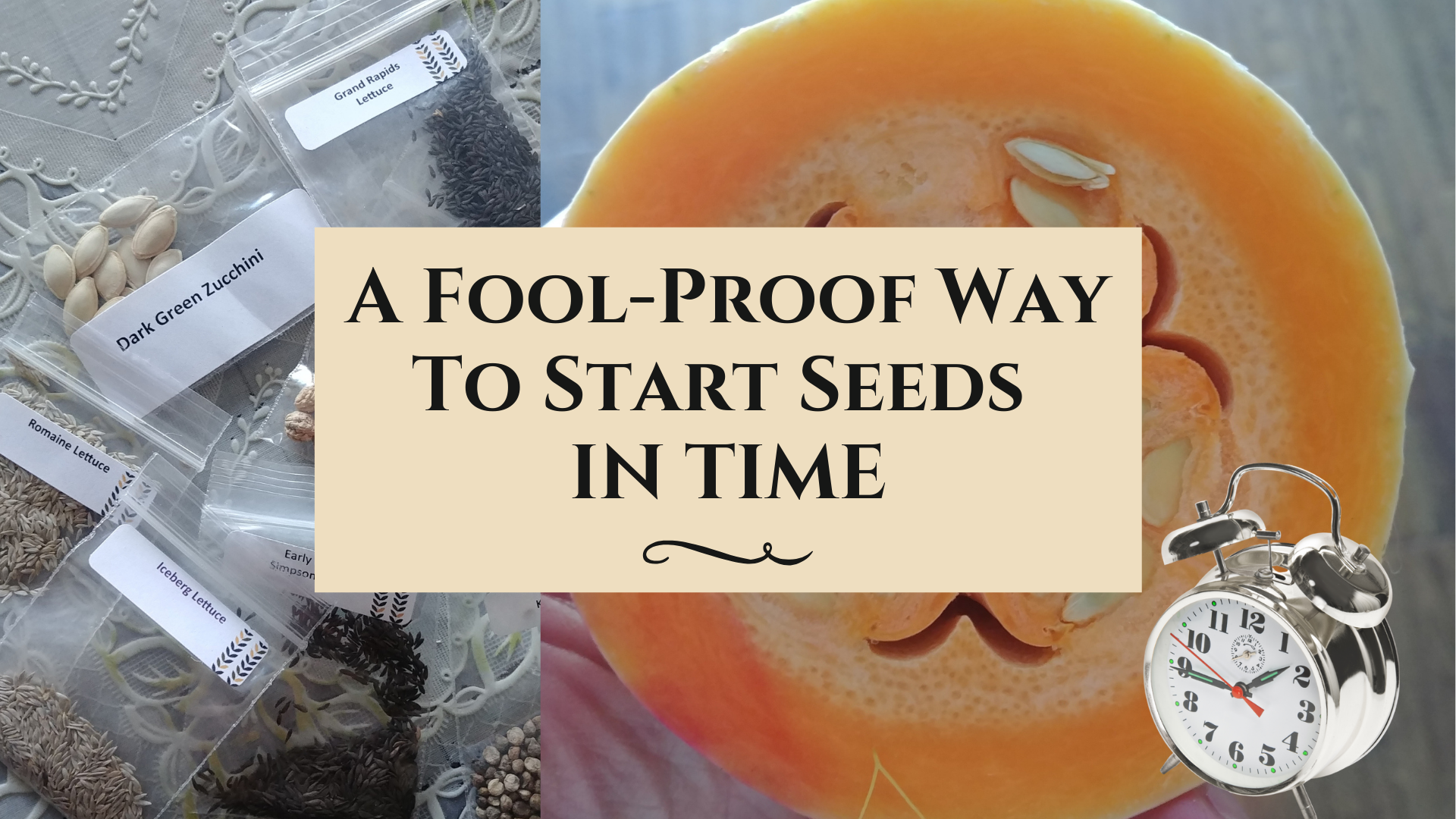I hear these concerns multiple times as people keep asking:
When should I start my seeds?
What are the best dates for planting seeds and transplanting seedlings?
How can I find that golden hour when my seedlings reach proper size and maturity to look and feel ready to be transplanted into the ground?
I know where you’re coming from, my friends. Seeing your seedlings start to thin out under indoor conditions is unpleasant while the weather is still cold outside.

That’s a clear example of your seeds starting too early.
It is tough when the seedlings are still too small and must be ‘carrot’ for inside, even if you’re becoming itchy to move them outdoors because the weather is quite warm and sunny out there.

Oops!! This happened when I was late with starting seeds. Don’t ‘beet’ yourself up over it.
That’s why I’m here with you to discover the ideal ‘thyme’ to plant seeds, so they are ready to get moved into the ground healthy. Lettuce all learn from this, shall we? 🙂
Of course, you may often refer to the seed pack information. Seed packs may give reference to:
- The month to plant in:
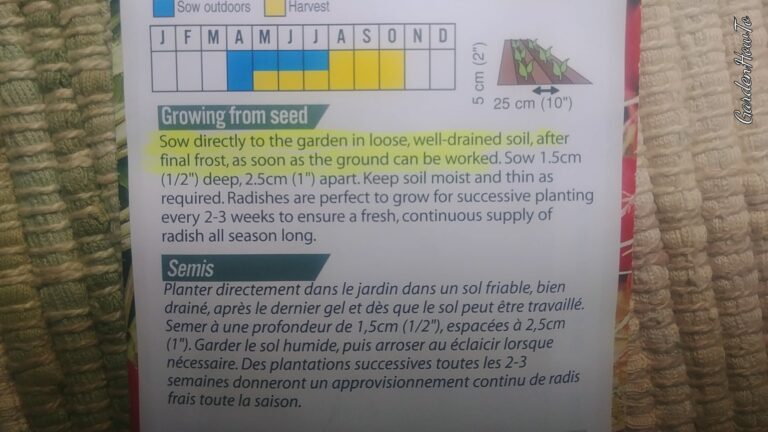
- the number of Days to Maturity (DTM):
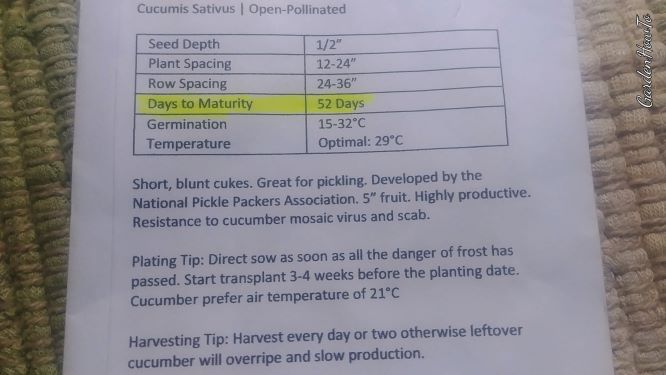
- or the number Days to Sprout (also known as Emerge Seedlings Days or Germination Time):

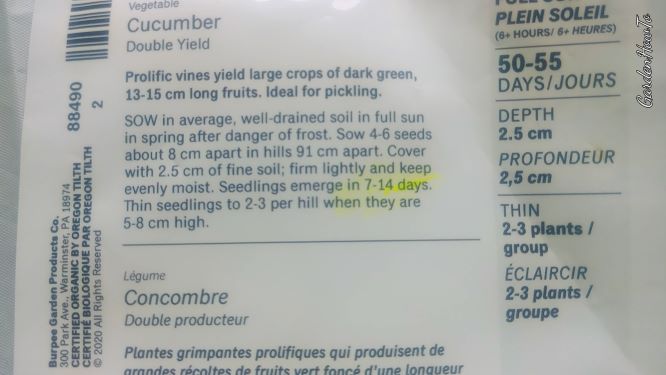
- or the number of weeks the seedling would need to grow into the stable transplant:
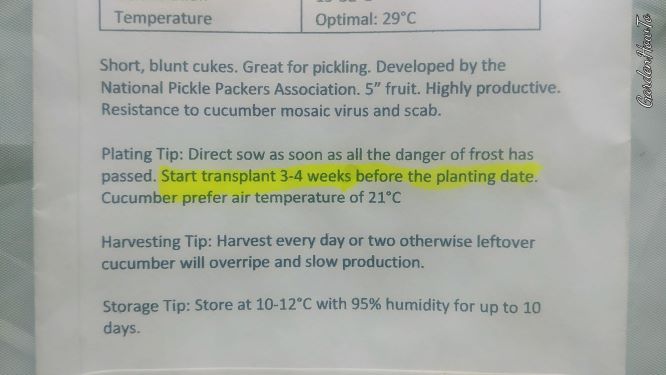
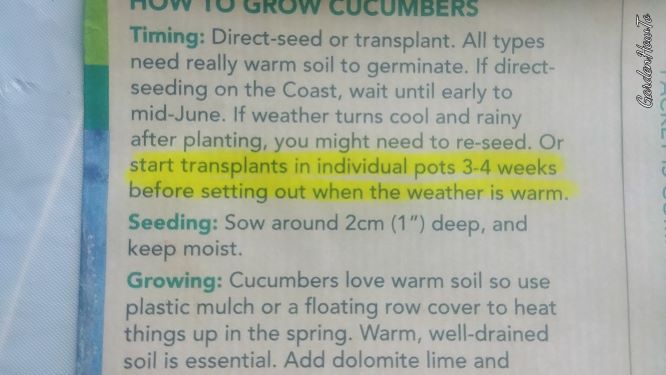
Aren’t you confused already? I certainly am… It all looks a bit puzzling, some piece here, some there. Would you not like to see clear timing instructions right on the seed pack?
However, leaving the seed packs aside, say you collected your own seeds as I do, or bought a tiny pack of heirloom seeds at the last Seedy Saturday or exchanged with a friend or neighbour in the previous Seed Swap.
There is no specific label on these seeds. You have no idea what variety that ‘tomato’ is. And even if you know, would you really waste your precious ‘thyme’ on googling ‘when I should plant Ambrosia Tomato in 2021?’. Honestly, there is no guarantee that one food gardening dude would bother with precisely the same Tomato variety and publish his or her own discovery online…

How would you know when to plant seeds from any of these packs in 2021 or even any next year?
So we’re back to square one, meaning we have to figure it all out by ourselves:
How soon can you see the seed popping up the first germinated sprout?
How long do you have to pamper the seedlings until they are ready to be moved to the cold frame or garden bed?
And, wait a sec! Have you heard about those crazy seeds that are strong enough to be planted in the bare ground when you can not step out barefoot yet?
Plus, did you know there are seeds that you can only drop down only when the weather is warm enough for you to walk barefoot on the grass?
If you want to uncover the answers to all of these secrets and more you can watch the shorter version of this article on the video:
Otherwise please stay with me here…
Honestly, I’d like you to plant your seeds in a minimum amount of steps and spend as little ‘thyme’ researching online as possible. I believe we have plenty of knowledge within the gardening community. When we share what we know and enrich each other with knowledge, we gain more than what we would from digging out the web’s dirt. From my humble perspective, the information we receive from the local expert is more truthful and reliable about the conditions we should grow our seeds in than the science we find online.
Back home in Ukraine, to gain gardening knowledge I would simply yell questions to my neighbour over the fence because everyone on the street was growing vegetables every year.
One of those spring mornings back then I decided to plant my seeds but had no idea when to start. So I ran out of the house in my pyjamas, took a look over the fence and saw the neighbour Maria who was more advanced with seeds and seedlings. I yelled to her: “Hey Maria, when did you plant your cucumbers last year, can you recall? I remember you had lots of them, no?” She replied: “April 23rd, can’t you wait?”
I wish we could recreate the culture of such a loving neighborship community today, without worries about appearing silly and not being glued to the internet.
That’s why I invite you to join my GardenHowTo club where we could promote the spirit of self-sufficiency and help each other to grow our food with as little fuss as possible.
Ultimately there are 3 things that you have to decide on while brainstorming about when to plant your seeds:
- Last Frost Date
- Time To Germinate
- Days To Maturity
First, let’s find out what the Last Frost Date is in your area.
You can sneak into The Old Farmer’s Almanac page to find that info. For example, the last frost date in our climate zone 5b is predicted to be celebrated around May 8th:
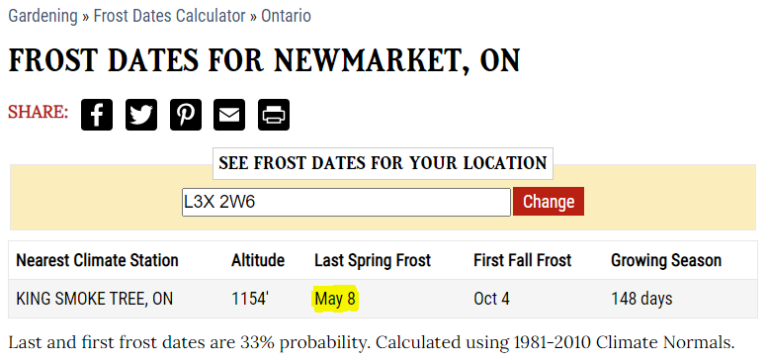
The second important factor is Time To Germinate.
However, before explaining the importance of this factor I’d like to invite you to review what it takes the vegetable seed to grow into a bold, healthy, and promising seedling. I have picked up the ready-to-go Sweet Pepper seeds to demonstrate all the fun they will blossom through during their lifetime:
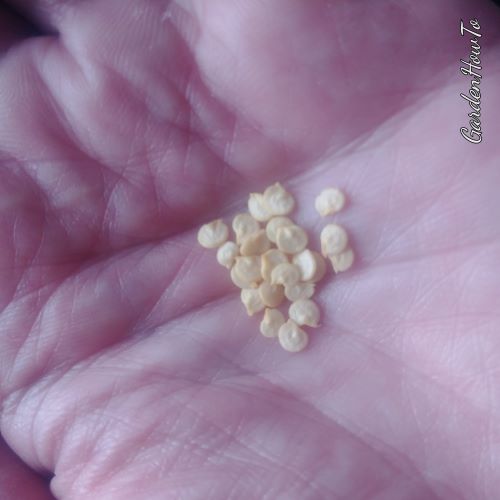
In this photo, you can see how the seed’s shell must crack out to germinate from the birth to infantry:
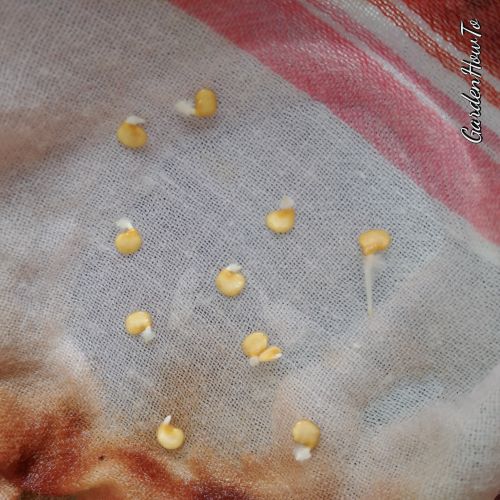
Then the sprout releases first leaves that are not true ones. These leaves will fade and get decomposed during childhood 😊
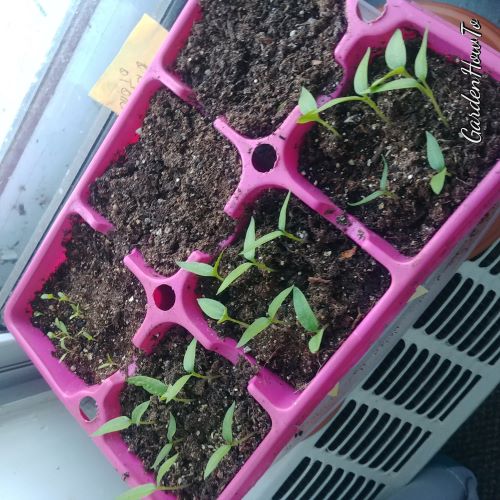
When this baby green enters its adolescent years, it shows its first natural leaves:
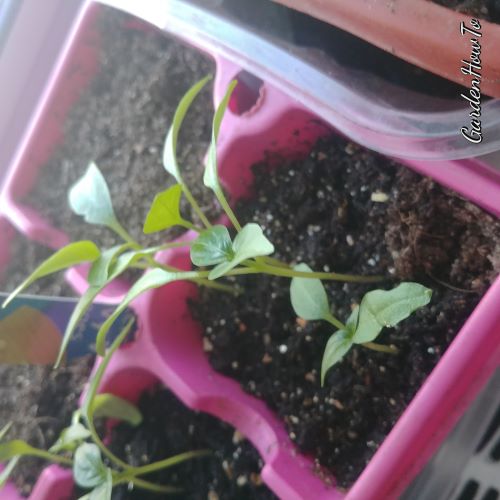
Finally, when we observe 3 or 4 true leaves, our seedlings are ready for adult life outdoors. That’s where we have to sync timing with the last frost date found above:
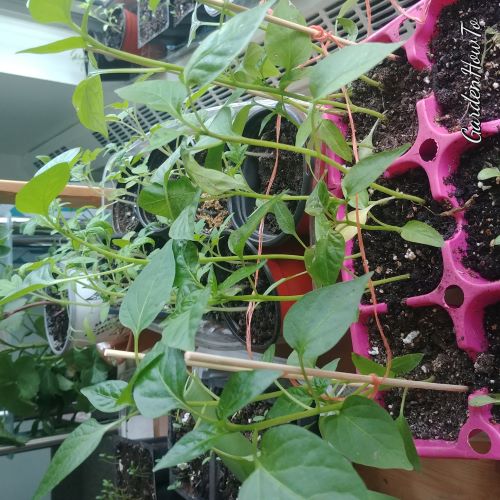
I have run over the whole life process to point out that when you plant your seeds in the house they have to not only germinate but also advance to mature seedlings. This is why they require an additional time-period indoors so that seedlings are ripe enough to get moved to the harsh outdoor environment with all the entertainment of winds, rains and sunlight. Or is it Earth, Wind and Fire? 😉
Here is how the vegetable crops differ in Times to Germinate:
1. Short-germinating Seed (1-14 days), e.g. Beans
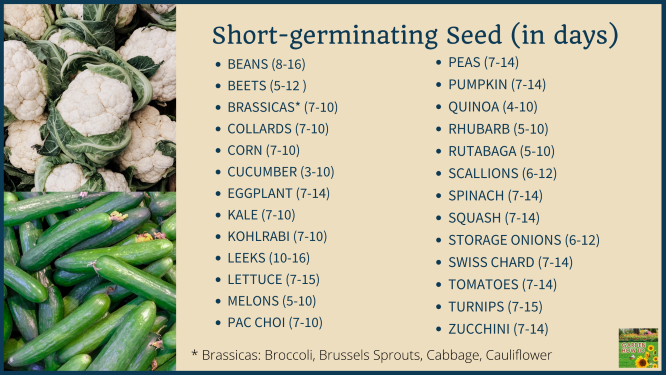
2. Long-germinating Seed (14-21 days), e.g. Potatoes
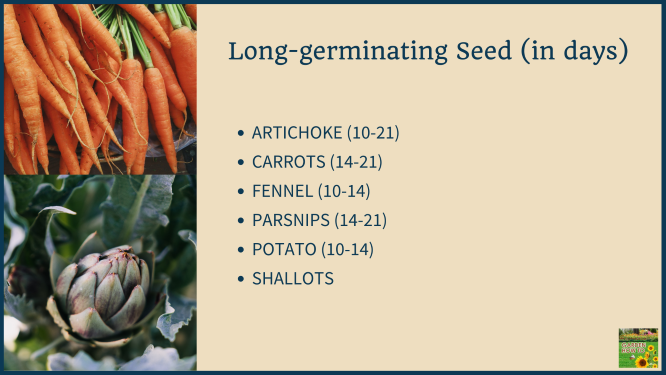
3. Extra-Long-germinating Seed (22-28 days), e.g. Peppers and Eggplant
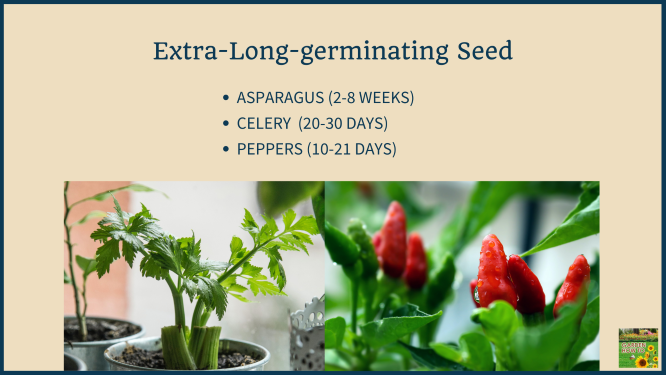
The following conditions influence germination ‘thyme’ as well as indoor growth period:
- The indoor environment where you are conditioned into (say you have only North-faced or small-sized apartment windows). Also, germination might improve when you spend money on various tools that you can afford: grow lights, heat mats, windowsill, warmed greenhouse and others.
- Planting too early or too late in the season. Seeds (and seedlings) wait for the right temperature and length of day to start and continue growth. Seeds grown out of season will take longer to germinate and/or may decompose before they do germinate unless grown under special mini-greenhouse or shade netting conditions.
- Using old seeds. Seeds are viable for several years, but their viability has decreased after a specific amount of years. They don’t lose their viability completely though. For example, you can still grow seeds that are 10 years old. They simply need special preparation that I can cover in a separate novel if you’re interested. Are you? Please let me know in a comment below.
- Planting in soil that is too wet. Wet soil restricts oxygen, which is required for healthy root growth. Plants can die even in fertile soil when soil oxygen is too low to sustain growth.
And last but not least it’s interesting to know the Days to Maturity for those lovely crops we decide to grow.
Days to Maturity is a relative indication of the time it takes between planting and harvesting. This number varies depending on weather, soil temperature, microclimate and sun exposure.
When you look into the seed catalogs, they often provide Days To Maturity numbers. Take a look at these adorable peppers for example.

You can find that some of them need 60 while others as many as 100 days to grow to maturity.
For some crops, Days to Maturity are counted from direct sowing, so overall, this period includes the ‘thyme’ to germinate, ‘thyme’ to grow to the adult seedlings and ‘thyme’ to ripen to get the harvest. For example:
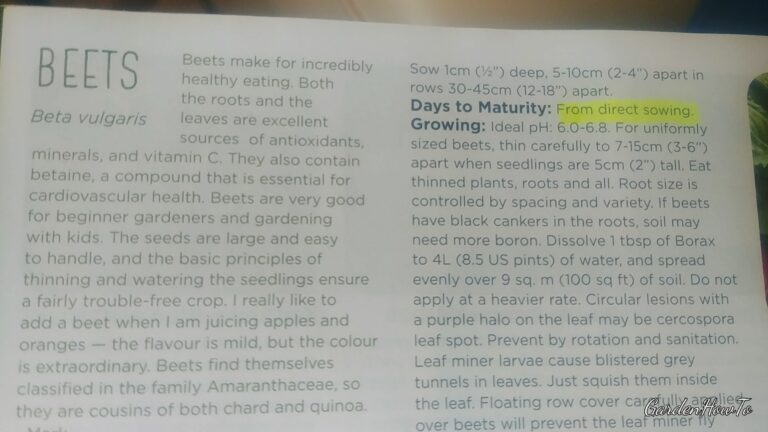
However for other crops, including Peppers, Days to Maturity counted from the transplant date. For example, pepper needs 74 days. Dividing 74 by 30 will give you 2.5 months. So if you transplant pepper seedlings in the middle of May, they will be ready to harvest at the end of July.
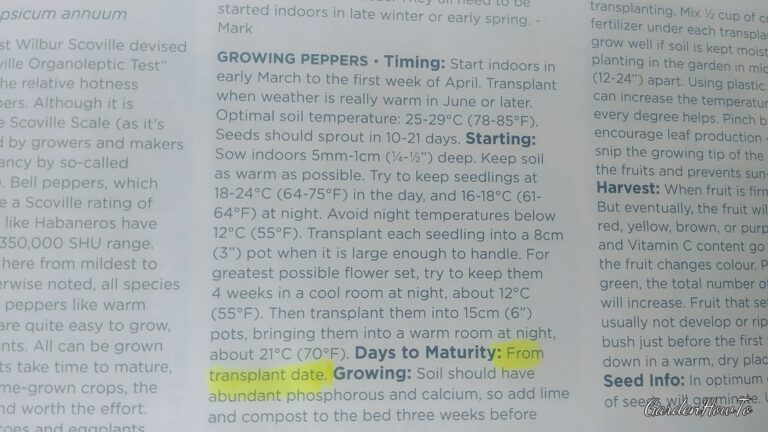
Early or late harvesting varieties also occur. Those have short vs long Days To Maturity periods:
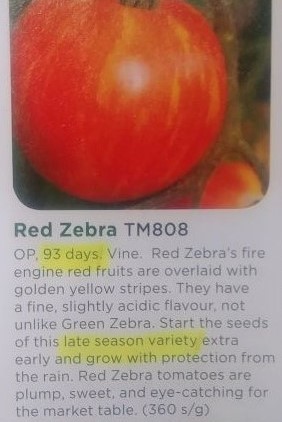
From https://www.stokeseeds.com/ca/faqs :
The number of days beside the varieties - are they from the sowing date or the transplant date? Check the catalogue of cultural information of the cultivar you are interested in. Some days to maturity are based on raising the plants from seed, like beans, while others are based on the time of setting the transplants out, like cabbage. The number of days to maturity depends upon many factors: region, climate, planting dates, soil, cultivation, and stress. Because of this, use the days to maturity as a guide only.
As all vegetable crops split up in their behaviour, I have divided them into the following 3 groups depending on when their seeds have to be planted:
1. Plant the seeds of the following crops outside as soon as the soil is ready. These crops will grow to maturity outdoors without the hassle of starting seeds indoors.
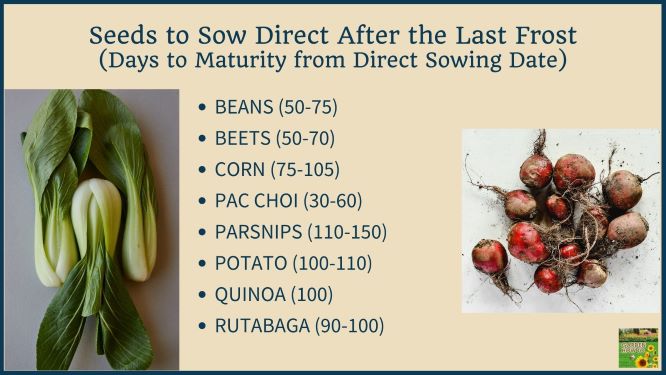
Drop these seeds outside as soon as the ground can be worked. I would say this group is the easiest one in deciding on the planting date timing.
2. Cold-tolerant crops that could be sown on the ground close to the last frost date.
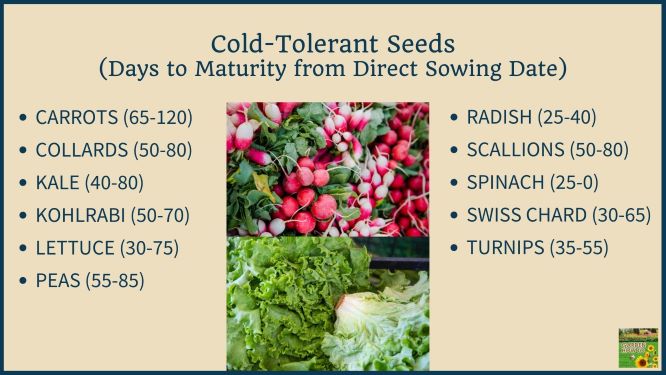
Same with the previous group you can drop the seeds of these crops directly into the open ground. The only difference is that you can play with some risk in planting before the last frost date, safer with those crops that have a longer ‘thyme’ to germinate so that the tiny sprouts won’t get hurt by the sudden spring frost.
3. Crops that won’t get ripened in time if being directly-sown in the ground or are crops that like warm temperatures. They need a long Days To Maturity period, counted from the transplant date.
E.g. We have to transplant Peppers to the ground when the weather is hot in June or later. Or we have to make sure to sow Eggplants indoors within 2 weeks following the last frost date.
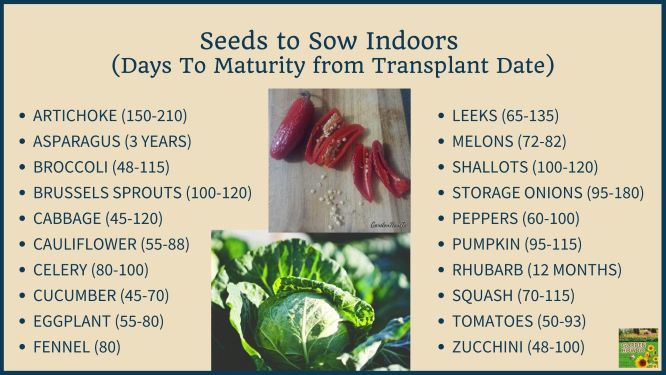
Here’s what I realized when I compared the number of Days To Maturity with the number of weeks the seedling needs to stay indoors before the last frost. For most of the vegetable seeds that have to be taken ‘carrot’ indoors, the higher Days To Maturity number is the longer time period they need to grow the seedlings indoors. Therefore when you calculate their ideal seed starting date you have to subtract the number of weeks from the last frost date directly proportional to the Days To Maturity number.
It was eye-opening for me to use this strategy, and I hope it helps you clearly figure out when you have to plant seeds indoors.
How to calculate the seed planting date from the Days To Maturity:
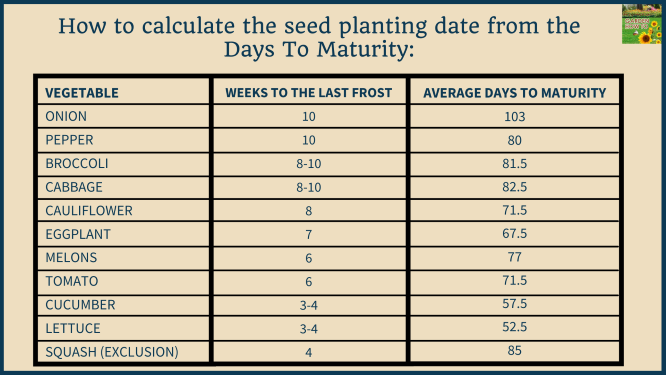
Let’s take Leeks for example:
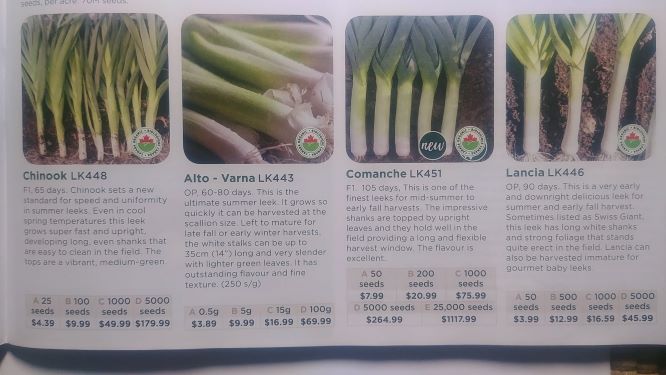
Days To Maturity: 60-105 days, comes to 82.5 on average.
Find the row in the AVERAGE DATES TO MATURITY column where 82.5 would fit in.
Scroll to the left to the WEEKS TO THE LAST FROST column.
It comes out that you’d have to start Leeks indoors 8-10 weeks before transplanting.
And if you would like to follow the age-old tradition of planting by the Moon here is one more secret I’d love to share with you.
You will have more chances to succeed with your seedlings if you plant the seeds of the crops that produce the fruits above the ground from 2 days before the New Moon up to 7 days after.
For the root vegetables (like carrot, beet, potato, turnips) you will have much better chances to win the game if you plant their seeds from the Full Moon up to 7 days after.
To learn more about how the Moon influences our planting here on Earth, read here.
As a last resort, if you’re new to planting your seeds and are not patient enough to find this info, here is what you can do:
Divide the seeds into two or three batches and sow them at intervals to see what works best. This way, you watch and learn that your seedlings should be ready for the garden. This is when the golden hour happens. Easy to say but not easy to do, right?
You will be surprised by plants that grow much faster or slower than expected, but you usually should end up with transplants that are about 4 to 6 in. tall when they are ready to move to the garden.
Here in southern Ontario (climate zone 5), we raise most seedlings indoors between late February and May. If you live in the milder climate zones, start right after New Year’s. For fall crops, start a small batch in July or August, following the same principles. Most annual vegetables, such as tomatoes, need about six to ten weeks before they can be set out. From my experience, peppers need more ‘thyme’ indoors to build stronger stems. Ten weeks would be ideal for them. The fastest growers, such as cucumbers and calendulas, are big enough for the garden in just four weeks. As the last frost date in our climate zone usually happens around May 8th, I would plant cucumber seeds at the beginning of April.
Don’t wait for long anymore, start planting your seeds right away, and let me know in a comment below how it goes.
I’m looking forward to hear from you 😉
Credits:
https://www.gardenfundamentals.com/when-start-seeds-indoors/
https://heeman.ca/garden-guides/seeding-calendar-ontario/
https://garden.org/apps/calendar
http://yougrowgirl.com/the-lazy-gardeners-seed-starting-chart/
https://www.johnnyseeds.com/growers-library/seed-planting-schedule-calculator.html
https://www.gardeners.com/how-to/when-to-start-your-seeds/5215.html
https://www.westcoastseeds.com/
https://www.stokeseeds.com/
How To Grow More Vegetables by John Jeavons

